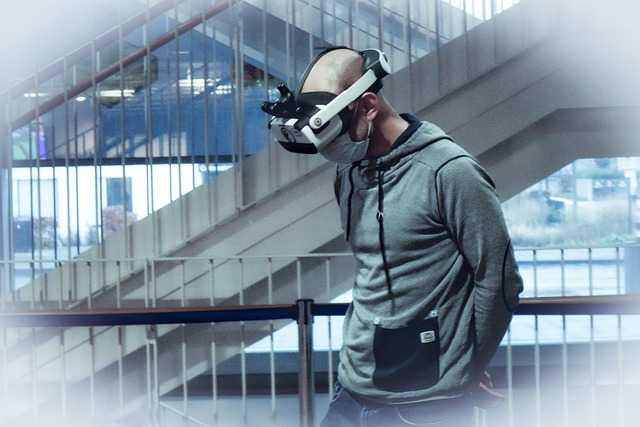Immersive technologies like Virtual Reality (VR) and Augmented Reality (AR) have revolutionized the gaming industry, offering players a whole new level of interactive experience. As a passionate gamer and tech enthusiast, I’ve witnessed firsthand how VR and AR have transformed the way we play and engage with games.
In this article, I’ll delve into the market penetration of VR and AR in gaming and explore the promising growth prospects these technologies offer. From enhancing gameplay to creating virtual worlds that blur the line between reality and fantasy, VR and AR have opened up a world of possibilities for both developers and gamers alike. Join me as we uncover the exciting landscape of VR and AR in gaming and discover the potential they hold for the future of interactive entertainment.
Evolution of VR and AR in Gaming
Virtual Reality (VR) and Augmented Reality (AR) have undergone significant advancements within the gaming industry, providing players with unparalleled immersive experiences. As a tech enthusiast and avid gamer, I have witnessed the transformative impact of these technologies on gameplay and engagement.
Historical Milestones
- VR and AR technologies have roots that trace back to the late 20th century.
- The first commercial VR headset, the Sega VR-1, was released in the early 1990s.
- In 2014, Facebook acquired Oculus VR, a milestone that accelerated the development and adoption of VR technology.
- AR gained mainstream attention with the release of Pokémon Go in 2016, showcasing the potential for AR experiences on mobile devices.
- Early VR and AR systems faced limitations in graphics quality, motion tracking, and latency.
- Technological advancements in display resolutions, hardware capabilities, and tracking systems have addressed these challenges.
- Integration of AI and machine learning has enhanced user experiences by optimizing performance and content delivery.
- Cloud computing and 5G connectivity have enabled seamless streaming of high-quality VR and AR content, overcoming previous bandwidth constraints.
Current Market Penetration of VR and AR in Gaming
As I analyze the current landscape of VR and AR in gaming, let’s delve into the key players and products shaping this dynamic industry and explore insightful geographic insights.
Key Players and Products
In the realm of VR and AR gaming, major industry players like Sony with its PlayStation VR, Oculus Rift, and HTC Vive have been instrumental in driving innovation and pushing the boundaries of immersive gaming experiences. These leading companies have introduced cutting-edge headsets, controllers, and peripherals that have revolutionized how players interact with virtual worlds.
Moreover, the rise of standalone VR devices like the Oculus Quest series and the advancements in AR technology through products such as Microsoft’s HoloLens indicate a diversification of offerings within the market. These developments cater to a broader audience and showcase the industry’s commitment to enhancing accessibility and user experience in gaming.
Geographic Insights
Geographically, North America stands out as a key adopter of VR and AR technologies in gaming, with the presence of major tech hubs like Silicon Valley fostering innovation and development in this sector. The region’s strong gaming culture and appetite for cutting-edge technology have driven significant market penetration and adoption rates of VR and AR devices among gamers.
Additionally, regions like Asia-Pacific, particularly China and Japan, have emerged as growing markets for VR and AR gaming, fueled by a combination of technological advancements, a large gaming population, and a thriving esports ecosystem. The competitive landscape in these regions is vibrant, with local and international players vying for market share and introducing region-specific content to cater to diverse gaming preferences.
This overview of key players, products, and geographic insights provides a snapshot of the current market penetration of VR and AR in gaming, showcasing the industry’s global reach and the diverse opportunities that lie ahead for developers and gamers alike.
Growth Prospects for VR and AR in Gaming

As I delve into the growth prospects for VR and AR in gaming, I see promising opportunities driven by emerging technologies and evolving consumer trends and preferences. Let’s explore how these factors are shaping the future landscape of virtual and augmented reality in the gaming industry.
Emerging Technologies
I foresee continued advancements in hardware and software technologies propelling the growth of VR and AR in gaming. Innovations such as eye-tracking sensors, haptic feedback systems, and improved display resolutions are enhancing the immersive experiences offered to gamers. Additionally, the integration of artificial intelligence and machine learning algorithms is enriching gameplay dynamics and personalization, further augmenting the appeal of VR and AR gaming experiences.
Consumer Trends and Preferences
In assessing consumer trends and preferences, I observe a shift towards interactive and social gaming experiences that VR and AR technologies excel at providing. Gamers are increasingly seeking multi-player collaboration, competitive online gaming environments, and customizable avatars, all of which are well-supported by virtual and augmented reality platforms. Furthermore, the demand for cross-platform compatibility and seamless integration with mobile devices is driving the development of VR and AR games that offer versatility and accessibility to a wider audience.
By aligning with emerging technologies and catering to evolving consumer needs, the growth prospects for VR and AR in gaming appear bright, promising a future where immersive experiences and interactive gameplay redefine the boundaries of virtual worlds.
Challenges and Opportunities for Market Growth
As I explore the challenges and opportunities for market growth in the realm of VR and AR gaming, certain factors come to light that could shape the future landscape of this dynamic industry.
Regulatory and Privacy Concerns
In the dynamic sphere of VR and AR gaming, regulatory and privacy concerns play a crucial role in shaping the market landscape. As advancements in technology continue to push boundaries, issues related to data privacy, user safety, and compliance with regulatory standards become paramount. Ensuring that user data is protected, maintaining transparency in data collection practices, and adhering to evolving regulations are essential for sustained market growth in the VR and AR gaming sector.
Investment and Funding Landscape
Exploring the investment and funding landscape reveals both challenges and opportunities for market growth in VR and AR gaming. Securing financial backing for research and development, content creation, and technological innovation is essential to drive industry growth. Opportunities arise from the increasing interest of venture capitalists and tech giants in the potential of VR and AR technologies. Strategic investments in hardware, software, and content creation can fuel innovation and propel the market forward, opening up new avenues for immersive gaming experiences and technological advancements. Staying abreast of investment trends and capitalizing on funding opportunities are key to unlocking the full potential of VR and AR in the gaming industry.




